With Dr Carla van Laar AThR
Feature image credit: Carla van Laar
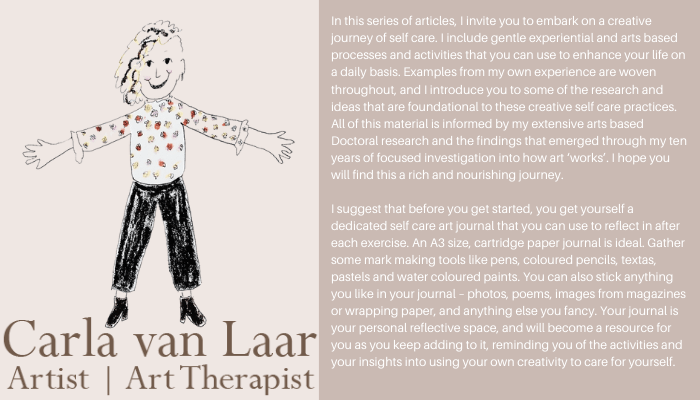
In this series of articles, I invite you to embark on a creative journey of self care. I include gentle experiential and arts based processes and activities that you can use to enhance your life on a daily basis. Examples from my own experience are woven throughout, and I introduce you to some of the research and ideas that are foundational to these creative self care practices. All of this material is informed by my extensive arts based Doctoral research and the findings that emerged through my ten years of focused investigation into how art ‘works’. I hope you will find this a rich and nourishing journey.
I suggest that before you get started, you get yourself a dedicated self care art journal that you can use to reflect in after each exercise. An A3 size, cartridge paper journal is ideal. Gather some mark making tools like pens, coloured pencils, textas, pastels and water coloured paints. You can also stick anything you like in your journal – photos, poems, images from magazines or wrapping paper, and anything else you fancy. Your journal is your personal reflective space, and will become a resource for you as you keep adding to it, reminding you of the activities and your insights into using your own creativity to care for yourself.
We start by “coming to our senses”.
coming to our senses
Presence, as a therapeutic quality, emerged in humanistic psychology in the 1950s through the emphasis and attention given it by Rogers (1980), Perls (1969), Moustakas (1969, 1986) and others, all of whom emphasise “being” as a core value in therapeutic presence. Since about 1990, art therapy and therapeutic literature has examined presence from perspectives that emphasise phenomenological presence, therapeutic presence, the presence of imagination and improvisation, and the presence that artworks can exert. (van Laar 2020 p. 137)
Tufnell and Crickmay (2004) highlight the relationship between embodied sensing and present moment awareness when they describe “arriving into the body, into the world, becoming present” (p.3). They highlight that:
“It is through the sensuous world of the body, through our eyes, ears, skin, muscles, and organs that we see, feel and respond to all that happens. The body is the ground from which all our knowing of the world begins. It is within our bodies, in our instinctual and sensory responses, that we discover the changing field of what is happening to us. In the rush and pressure of our everyday lives we easily become numbed, cut off from our bodies. (Tufnell & Crickmay, 2004, p. 3)“
Here is a simple guided relaxation that you can practice to bring yourself into connection with your embodied sensory awareness in the here and now, the present moment. You can read it and then practice it, have someone else read it to you, or read it out loud, record yourself and play it back to yourself to make your very own personalised guided relaxation track.

simple guided relaxation
Find a comfortable place in the room.
You can lie on your back on the floor or sit comfortably, whatever is more relaxing for you. Make sure
you have enough space around you so that you are not touching anyone else.
Focus your attention internally, towards yourself. You can close your eyes. If you don’t want to
completely close your eyes you can just look down with your eyes half closed. Avoid making eye
contact with anyone else so that you don’t interfere with their relaxation.
Now, I’m inviting you to start to notice your breath. There is nothing else you have to do, just pay
attention to the in breath and then the out breath.
Notice the rise and fall of your chest and belly as you breath in and out. Slow your breathing down
slightly. Focus on breathing deeply right into your lower abdomen, your middle abdomen and then your
chest. As you exhale push all the air out until your lungs are completely empty.
Do this three times and then just breathe normally, watching the breath go in and come out.
Now, I’m inviting you to draw your attention to your feet. Notice where they are touching the floor,
where the ground underneath you supports them. Notice any areas of tension in your feet; wiggle them a
little if you need to. Then, just let your feet go floppy, soft, and relaxed.
Bring your attention to your calf muscles, your shins and your knees. Notice any sensations, tightness,
tension, tingling or anything else you can feel in your lower legs. Allow your legs to feel supported by the
floor, squeeze your muscles tight, hold it for a moment, and then, as you breathe out, let all the tension
go. Let your lower legs go soft and floppy, let them just relax.
Now, I’m inviting you to notice the area of your upper legs, thigh and buttocks. Again, bring your
attention to any sensations or tensions in these areas. Again, notice where they are resting on the
floor, and what it is like to feel supported by the ground beneath you. Tense up the muscles in these
areas and hold it for a moment, and then, with the out breath, let it all go. Feel any tension you have just
slip out of your body and into the floor. Your whole upper legs, thighs and buttocks area is feeling heavy,
soft, supple and relaxed.
Enjoy the feeling of relaxation in your lower body. There is nothing else you need to do, just be here and
now.
And now draw your focus to your pelvic area and stomach. Notice where they feel round and open and
soft. Notice where they feel restricted, tight or hard. Breathe into these areas, letting your breath
expand and open them.
With a big breath in, pull the muscles in your pelvic and stomach areas tight, squeezing them together
firmly and holding the tension in them. Hold it, hold it, hold, then, breathe out and let it all go, let it all
relax. Feel the softness and openness in these areas as let go of the tension and just relax.
We’re going to do the same thing with our backs. Notice your back, your spine, your ribs, the muscles of
your ribs, and your chest, your lungs and heart. Notice the sensations in your back and spine. Notice
your ribs and the rise and fall of your chest as you breathe in and out. Notice your lungs expand and
contract. Notice your heart beating. Don’t try to change anything, just pay attention to all of these
internal workings of your body. Simply be present, here and now.
With a big breath in, squeeze your back, your spine, your ribs, the muscles of your ribs, and your chest, your lungs and heart areas tight, holding them together firmly and keeping the tension in them. Hold it, hold it, hold,
then, breathe out and let it all go, let it all relax. Feel the softness and openness in these areas as let go
of the tension and just relax.
We’re moving our attention now up to our shoulder blades, shoulders and neck. Maybe you’d like to
shrug your shoulders up and down a few times, rotate them forwards and backwards. Now just let them
be still. Pay attention to these areas. Notice the feelings inside your shoulder blades, shoulder area and
neck. Notice any areas of tension, stiffness or pain. Notice, also, any areas that are not drawing your
attention, the areas that are just OK.
And now, tense this whole area, tense your shoulder blades, tense your shoulder area and tense your
neck. Hold it as you hold a big breath in. And now, as you breathe out, let it go, and just relax. Feel any
tension sliding out of your body and into the floor, the ground beneath you. Letting all the tension go, so
that your shoulder blades, the whole shoulder area and your neck are soft, supple, and all relaxed.
Breath calmly as we move our attention to our face. Scrunch up your whole face like a tiny little prune.
Scrunch it as hard as you can, screwing up your nose, squinting your eyes and pursing your lips.
Breathe right in deep, and then, with a big exhale, open up your mouth as wide as possible and say
“Aaaah” with your breath. Do this three times, and then relax. Feel your mouth relax, your cheeks relax,
your nose relax, your eyes relax, your ears relax, your eyebrows relax, the area in between the
eyebrows relax, the temples relax, and your forehead relax. Your whole face is peaceful, calm, and all
relaxed.
And now, simply notice the back and the crown of your head. Pay attention to it. Allow yourself to notice
any sensations, tensions, tingles, the feeling of your hairs, and anything else going on in the back and
the crown of your head. There is no need to judge whatever is happening. Simply be aware, pay
attention and accept whatever is present in the back and the crown of your head. Try to squeeze the
muscles in the back and crown of head area; feeling what it is like to hold tension in there. Then, as you
breathe out, just let it go, let it all relax. The back of your head and the crown of your head are calm,
peaceful, and all relaxed.
Your whole entire body is soft, open, supple, peaceful, calm and relaxed. Right here, right now, in this
present moment, there is nothing at all you need to do. Simply be. Enjoy the feeling of calmness and
relaxation. Let your mind relax too. Let the thoughts come and go like clouds through the sky,
drifting through. There is nothing in your mind that you need to hang on to. Just let it go, and let your
mind relax.
Spend a few minutes enjoying the sensations of relaxation.
………………….
In your own time, draw your attention back to the room around you. Hear the sounds. Gently wriggle
your toes and fingers. Roll your head softly from side to side. Stretch your arms and legs. Slowly open
your eyes and come back to the room. When you are ready, roll gently to one side and carefully sit up. (van Laar 2012 pp. 50-52)
………………….
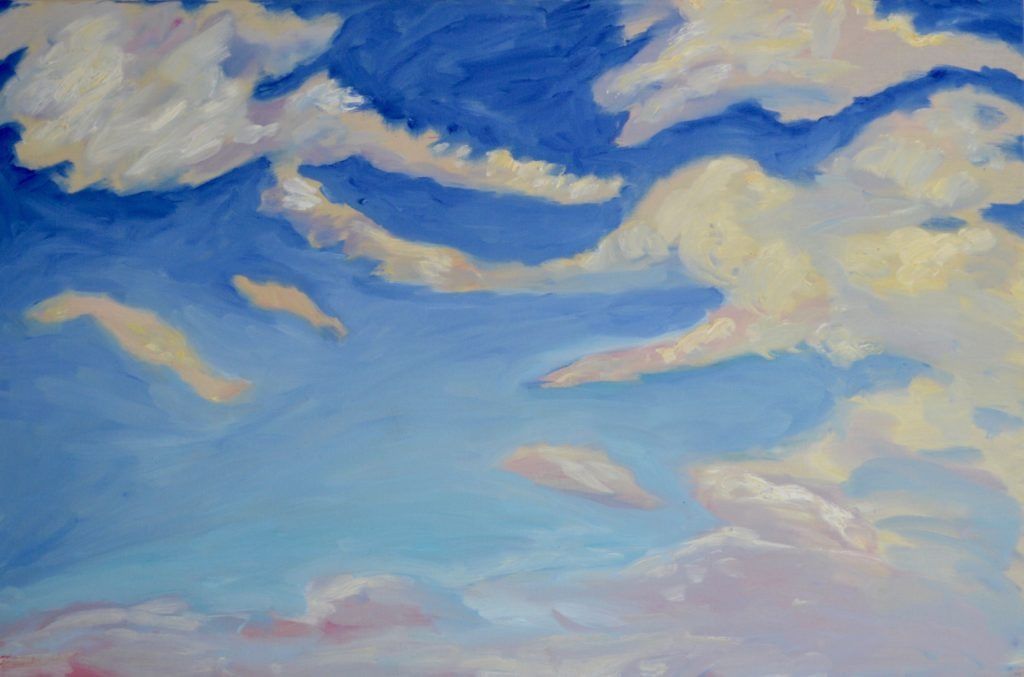
questions for reflective journalling
What did you notice as you paid attention to each part of your body?
Did you notice any changes in your body from the beginning to the end of the practice? What changed?
Did you notice any changes in your emotions as you engaged in the relaxation? What did you notice?
References
van Laar, C. (2012). Chill skills: an eight session program for supporting students to build skills in managing anxiety. Melbourne, Australia: School Focused Youth Services and headspace Western Melbourne.
van Laar, C. (2020). Seeing her stories: An art based inquiry. Carlavanlaar.com. Brunswick, Australia.
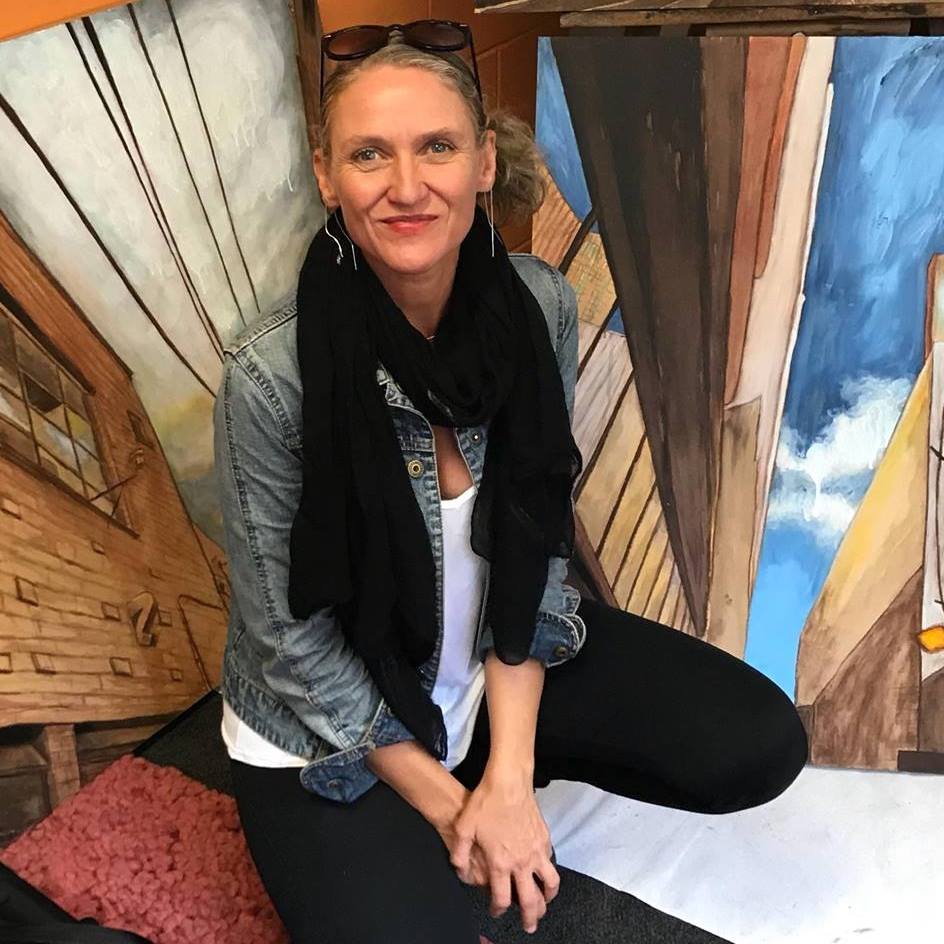
Dr Carla van Laar
Artist | Art Therapist
Master of Creative Arts Therapy
Doctor of Therapeutic Arts Practice
Registered Supervisor and Professional Member ANZACATA
Carla van Laar is a painter and therapeutic arts practitioner from Australia. Born in Brisbane, Carla is first generation Australian on her Dutch grandparents side, and 7th generation through her maternal bloodline who were mostly English and came to Australia in the early colonisation of the 1800s. Carla currently lives and works in Victoria, residing between Wurrundjeri country in Melbourne, and Boon Wurrung country in Inverloch, paying deep respects to the First Peoples of the Kulin Nations whose land was never ceded and will always be Aboriginal land. Identifying as a cisgender woman, Carla is passionately disinterested in socially constructed identities that disempower anyone. Carla has over 25 years’ experience working with people and the arts for health and well-being in community organisations, justice, health and education contexts.
Carla’s first book “Bereaved Mother’s Heart” was published in 2007 and broke social taboos about maternal grief. From 2008-18 she established and ran an independent art therapy studio and gallery in Melbourne. Her Doctoral research “Seeing Her Stories” continues the mission to make women’s stories visible, through art.
Carla has lectured and supervised Art Therapy students at RMIT, MIECAT and currently the IKON Institute. She is a practicing artist and in 2018 received an Artist Fellowship at RMIT’s creative research lab, “Creative Agency”. She insists on being part of a creative revolution in which art re-embodies lived experience, brings us to our senses, makes us aware of the interconnectedness of all life and is an agent of social change.
Carla’s new book “Seeing her stories” presents her research into making unseen stories visible through art, and is available to read for free online here or purchase a hard copy of the full colour hard cover coffee table book here.
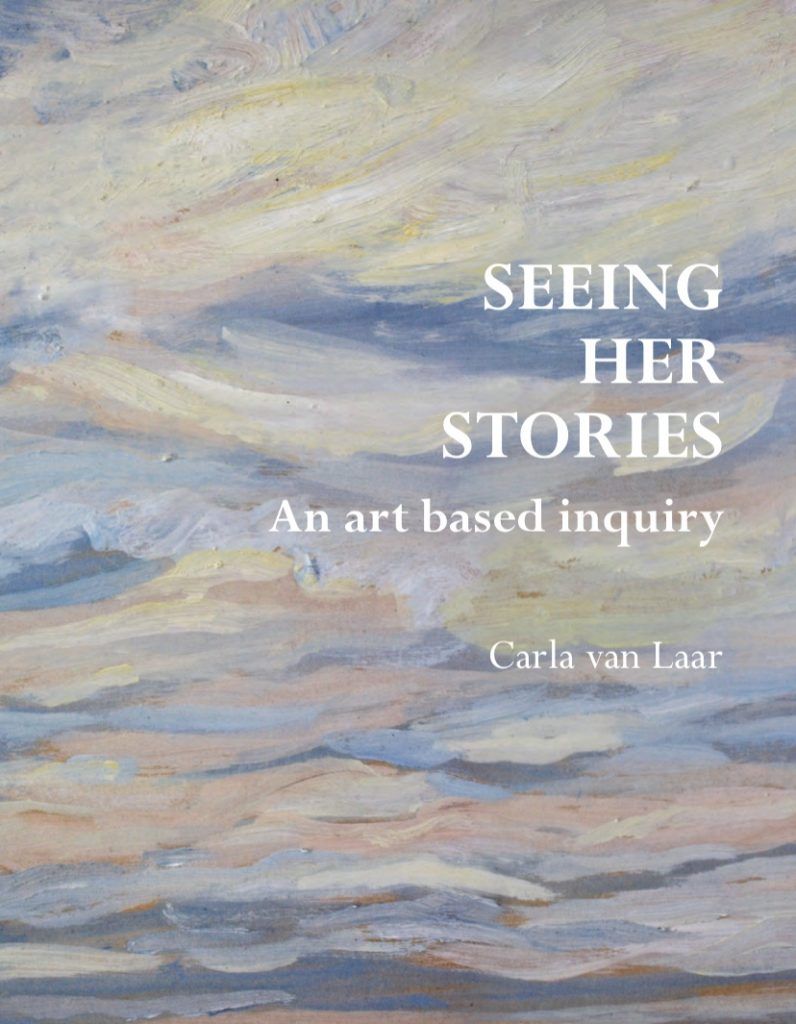

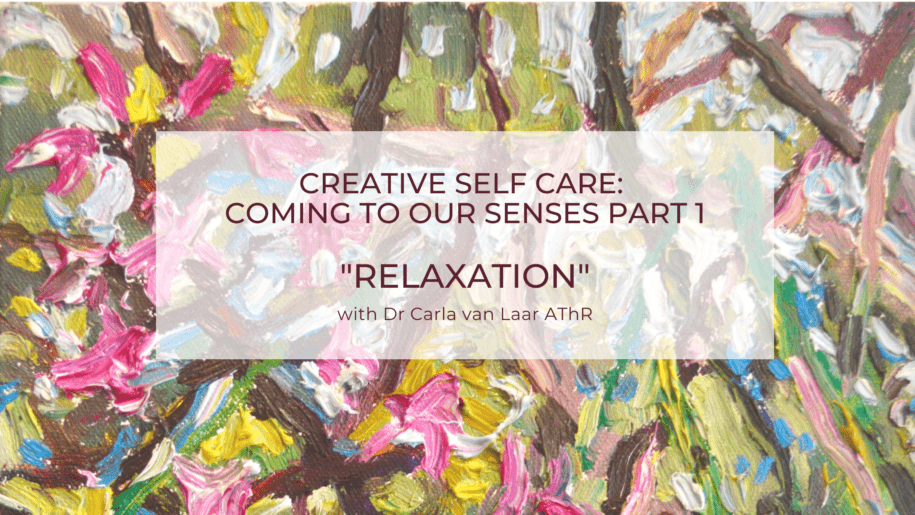
Leave a Reply